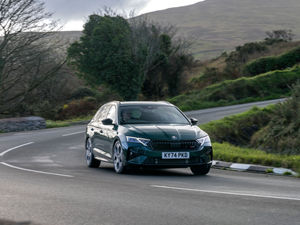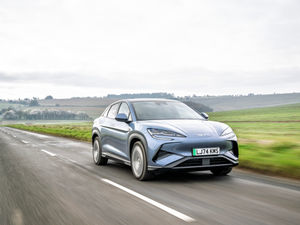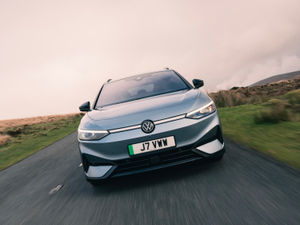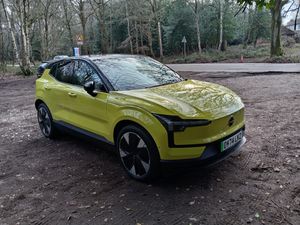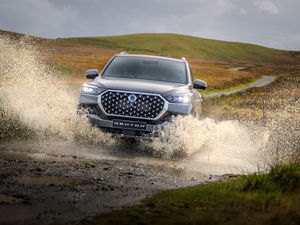First look: Audi’s R8 impresses on track
Tom Wiltshire heads to the Ascari race circuit for a few laps in the latest – and even faster – Audi R8
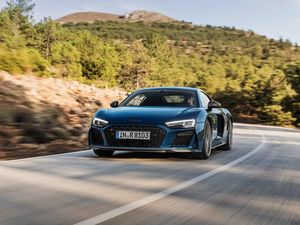
What is it?

This is the latest iteration of Audi’s R8 supercar. You might be forgiven if you hadn’t noticed – after all, the styling changes are pretty subtle, but make no mistake, there are more changes here than just the visual.
This is still Audi’s flagship machine – a technological tour de force, but one which, impressively, still packs a slightly old-school naturally-aspirated V10 engine. We had the opportunity to take the R8 for a quick spin around the Ascari circuit in Spain, though sadly the cars were not allowed out on the road. Spoilsports.
What’s new?

We’ll start with the visual. In keeping with Audi’s recent more-is-more approach to front grille design, the R8’s gaping maw has been made even wider and given the ‘Singleframe’ treatment. That’s had the effect of slimming the headlights and pushing them out to the very extremities of the car, but it works really well on the low-slung, aggressive R8. At the rear there’s a new full-width grille echoing that of the LMS racer.
Under the hood, the naturally-aspirated V10’s been given a tune-up and now produces 562bhp in its base form – an impressive 29bhp more than previously. The Performance model – previously known as ‘Plus’ also gets a boost of 10bhp to a hefty 612bhp.
What’s under the bonnet?

Five-cylinder engines – and their derivatives, like this V10 – have long been Audi’s forte, and so it’s no surprise that even a short spin around track is enough to know that it’s a sublime unit. The 5.2-litre unit is an increasing rarity as it’s naturally aspirated – that means no turbocharger or supercharger.
There are two advantages of this. The first is throttle response, which is totally instantaneous, and the second is noise. Put simply, this car sounds utterly glorious – and it only gets better as the revs build to their 8,700rpm redline. And, since maximum power doesn’t arrive until 8,000rpm, you’ll spend plenty of time up where the engine sounds its best.
With more than 560bhp on tap regardless of which model you go for, it’s no surprise that the R8 is a fiercely quick car – helped by quattro four-wheel drive, which aids in speed from a standstill. Coupe versions will do 0-60mph in 3.2 seconds, and go on to an impressive 201.3mph top speed.
The engine’s paired to a seven-speed S tronic gearbox, which shifts cogs so quickly that you won’t miss having a manual gearbox. That’s the case for track use, certainly, where you can carry so much speed that you’ll want both hands on the wheel for as much time as possible.
And, not that it matters to most supercar buyers, but the V10 is also cleaner than before. It now comes with cylinder-on-demand technology, which can shut down a whole bank of cylinders for increased efficiency, as well as a particulate filter to curb air pollution.
What’s it like to drive?
It’s difficult to comment on aspects such as ride comfort and low-speed agility, as we spent most of our time at Ascari giving the R8 as many beans as we dared. The R8 takes a very Teutonic approach to being a supercar – with handling that lacks the drama of some of its rivals, but makes up for it by being supremely secure and accurate.
It takes a great deal of effort to unsettle this car, and the quattro four-wheel drive system does a superb job of keeping the car secure through fast corners. The steering isn’t as direct and darty as a Porsche 911’s, but it’s still well weighted and very accurate. It’s been retuned since the last model, and Audi says that response and feedback have been improved – both in the standard rack and in the optional ‘dynamic’ system.
Switch off the traction control totally and the R8 can shuffle all of its power to the rear wheels, so if you want to get the car sideways there’s still that option. But it’s the four-wheel drive which makes this such a good all-weather supercar, and one that’s particularly easy to drive quickly.
How does it look?

The overall shape is identical to that of its predecessor, so don’t expect the new R8 to be wildly different. The devil’s in the detail, where existing styling features have been amped up and refined.
As mentioned, the front is dominated by the latest ‘Singleframe’ grille with a black honeycomb design. Also tweaked are the front bumper, spoiler and air intakes, while the lights have also been smoked.
Round the rear, there are new oval exhaust pipes which are particularly prominent in their contrasting surrounds. There’s also a full-width rear grille, the effect of which is spoiled somewhat by the number plate in the centre. LED rear lights match those on the front.
It’s easy to dismiss the R8 as lacking drama next to rivals from McLaren or in-house running mate Lamborghini, but that’s doing it a disservice – look at it with fresh eyes and the aggressive anger of this car is really rather appealing.
What’s it like inside?

Interior fittings are typically Audi, though we weren’t paying too much attention to the beautifully knurled climate controls or the MMI plus infotainment system. It’s good to note, though, that entry and exit is superbly easy for this class of car thanks to a wide door opening and sports seats which don’t hug you quite as aggressively as others.
Audi’s Virtual Cockpit dashboard is in full deployment in this car and, as with the smaller TT, it’s the only screen you’ll find in the interior. It can be controlled either through the steering wheel or through the rotary controller on the centre console.
Of more importance to us was the crystal-clear display itself, which in sport mode shows a big, digital speedometer and lightning-fast rev counter, plus a readout of gear ratio. All you need, presented well.
Verdict
From this early drive the Audi R8 certainly appears to deserve the entry-level supercar crown. Those with more money to spend certainly can, but you don’t need to – this provides all the supercar thrills you could want. We’ll wait to get it out on public roads before we give our verdict on how easy it is to live with every day, but early impressions are really very good indeed.

